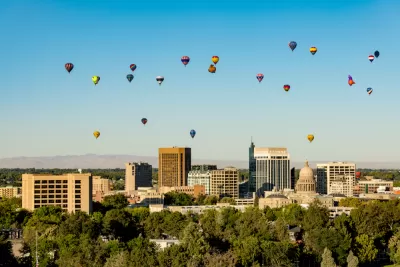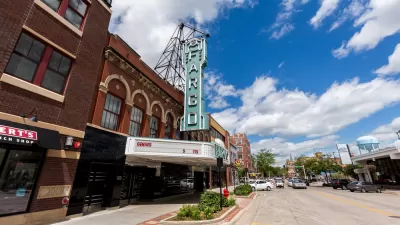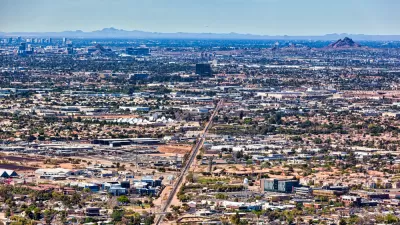An economist identifies the growth in nine U.S. cities—scattered from Utah to Texas, Arizona, Washington, and Idaho—as similar to the economic power generated in parts of Asia.

According to the premise of an article by Alan Cole, the 2017 GOP tax law and the COVID-19 pandemic opened an opportunity for cities offering "attractive amenities at more reasonable prices" compared to traditionally expensive cities like San Francisco and New York.
"Out of America’s 100 largest metropolitan areas, nine have experienced home price growth of more than 50 percent since late 2017 when the tax bill was signed into law," according to Cole, who then names Boise, Spokane, Austin, Phoenix, Tucson, Colorado Springs, Salt Lake City, Ogden, and Provo.
"These somewhat smaller metropolitan areas, largely located in the Mountain West, had a variety of advantages: reasonable prices, a growing high-tech economy, good weather or natural beauty, and relatively lower state and local taxes," according to Cole.
The cities were already on the upswing prior to 2017, but the changes since then have prompted Cole to compare the cities to the Asian Tiger economies of Hong Kong, Singapore, Taiwan, and South Korea.
"The nine American cities that I will call the Mountain Lion economies are playing an analogous role in contemporary American economic geography," writes Cole. "While they are generally too small to replace America’s largest economic hubs, and they are unlikely to become as expensive, they are nonetheless undergoing radical change and experiencing a rapid upswing in housing demand."
Cole also credits some of the growth in the Mountain Lion economies to overflow from expensive cities in California—namely, Los Angeles and San Francisco. Cole also builds a larger argument that includes an analysis of the characteristics of the Mountain Lion cities that provide long-term advantages—like beautiful natural environments, high quality universities, and cheaper housing than U.S. superstar cities.
FULL STORY: The Mountain Lions: these nine cities boomed in the COVID era

Alabama: Trump Terminates Settlements for Black Communities Harmed By Raw Sewage
Trump deemed the landmark civil rights agreement “illegal DEI and environmental justice policy.”

Study: Maui’s Plan to Convert Vacation Rentals to Long-Term Housing Could Cause Nearly $1 Billion Economic Loss
The plan would reduce visitor accommodation by 25% resulting in 1,900 jobs lost.

Why Should We Subsidize Public Transportation?
Many public transit agencies face financial stress due to rising costs, declining fare revenue, and declining subsidies. Transit advocates must provide a strong business case for increasing public transit funding.

Paris Bike Boom Leads to Steep Drop in Air Pollution
The French city’s air quality has improved dramatically in the past 20 years, coinciding with a growth in cycling.

Why Housing Costs More to Build in California Than in Texas
Hard costs like labor and materials combined with ‘soft’ costs such as permitting make building in the San Francisco Bay Area almost three times as costly as in Texas cities.

San Diego County Sees a Rise in Urban Coyotes
San Diego County experiences a rise in urban coyotes, as sightings become prevalent throughout its urban neighbourhoods and surrounding areas.
Urban Design for Planners 1: Software Tools
This six-course series explores essential urban design concepts using open source software and equips planners with the tools they need to participate fully in the urban design process.
Planning for Universal Design
Learn the tools for implementing Universal Design in planning regulations.
Smith Gee Studio
Alamo Area Metropolitan Planning Organization
City of Santa Clarita
Institute for Housing and Urban Development Studies (IHS)
City of Grandview
Harvard GSD Executive Education
Toledo-Lucas County Plan Commissions
Salt Lake City
NYU Wagner Graduate School of Public Service





























